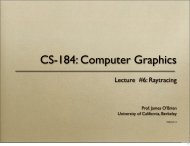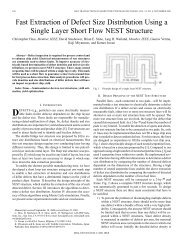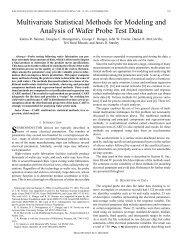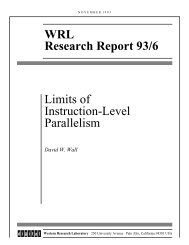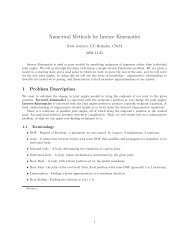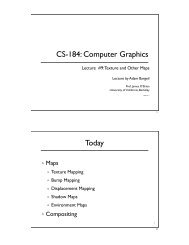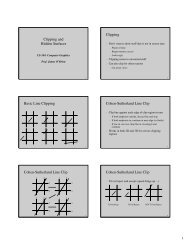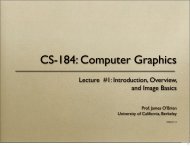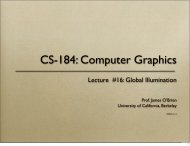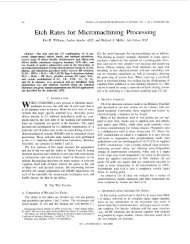2D Matrix Transformations Lecture Slides
2D Matrix Transformations Lecture Slides
2D Matrix Transformations Lecture Slides
Create successful ePaper yourself
Turn your PDF publications into a flip-book with our unique Google optimized e-Paper software.
Translations again<br />
We could do this:<br />
p ' = B(<br />
Ap + t)<br />
= BAp + Bt = Cp + u<br />
Ugly and awkward<br />
Some systems do it anyhow.<br />
Every transformation would be a matrix and a<br />
vector…<br />
Homogeneous coordinates<br />
Take a vector that represents a point and<br />
append a 1 at the end<br />
p<br />
p = <br />
p<br />
x<br />
y<br />
<br />
<br />
<br />
p<br />
p~<br />
=<br />
<br />
<br />
p<br />
<br />
1<br />
x<br />
y<br />
<br />
<br />
<br />
<br />
Homogeneous translation<br />
1<br />
p<br />
~ ' =<br />
<br />
<br />
0<br />
<br />
0<br />
0<br />
1<br />
0<br />
p<br />
~ ~<br />
' = Ap<br />
~<br />
tx<br />
<br />
p<br />
t<br />
<br />
y <br />
p<br />
1 <br />
<br />
1<br />
x<br />
y<br />
<br />
<br />
<br />
<br />
The tildes are for clarity. If only using homogeneous coordinates,<br />
we would omit them.<br />
Other transformations<br />
<br />
~ A<br />
A =<br />
<br />
0<br />
0<br />
Now everything looks the same…<br />
0<br />
0<br />
<br />
<br />
1<br />
Composing matrices<br />
Example<br />
When we rotate, we rotate about the origin<br />
Same for scale<br />
How could we do it about another point<br />
versus<br />
4



